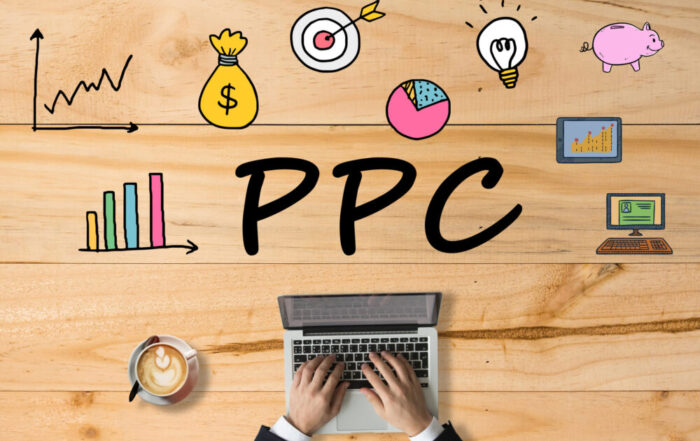Google PPC ads, also known as Google Ads or Google AdWords, are a form of online advertising where businesses bid on specific keywords to display their ads prominently on search engine results pages (SERPs) and relevant websites.
Introduction
In the vast digital landscape, businesses are constantly seeking effective methods to drive targeted traffic and generate valuable leads. Google Pay-Per-Click (PPC) advertising has emerged as a powerful tool, enabling businesses to reach their target audience and maximize their online presence. In this blog post, we will delve into the world of Google PPC ads, exploring how they work, why they matter, and how to leverage keywords effectively to enhance campaign success.
Understanding Google PPC Ads
Google PPC ads, also known as Google Ads or Google AdWords, are a form of online advertising where businesses bid on specific keywords to display their ads prominently on search engine results pages (SERPs) and relevant websites. These ads are triggered when users search for specific keywords or visit websites that align with the targeted keywords or demographics set by the advertiser.
The Benefits of Google PPC Ads
- Increased Visibility: Google is the most widely used search engine worldwide, making it an invaluable platform to showcase your products or services. PPC ads allow you to gain immediate visibility at the top of search results, enabling you to reach a wider audience.
- Targeted Advertising: With Google PPC ads, you can precisely target your audience based on factors such as geographic location, language, device, and demographics. This level of precision ensures that your ads are shown to the right people, increasing the chances of conversions. Google PPC ads provide extensive targeting options, allowing you to reach a specific audience based on factors such as keywords, location, demographics, interests, and even the device they are using. This level of precision ensures that your ads are shown to the right people, maximizing the chances of generating high-quality leads and conversions.
- Cost Control: Unlike traditional advertising methods, PPC campaigns provide complete control over your budget. You only pay when someone clicks on your ad, ensuring that you invest your advertising budget in the most effective manner. With Google PPC ads, you have complete control over your advertising budget. You can set a daily or monthly spending limit, ensuring that you never exceed your desired budget. Additionally, you only pay when someone clicks on your ad, making it a cost-effective advertising model. By monitoring and optimizing your campaigns, you can achieve a favorable return on investment (ROI) and maximize your marketing budget.
- Measurable Results: Google provides a comprehensive suite of analytics tools to track the performance of your PPC campaigns. These insights allow you to measure your return on investment (ROI), identify areas for improvement, and make data-driven decisions to optimize your advertising strategy. Unlike traditional advertising methods, Google PPC ads provide detailed and measurable insights into your campaign’s performance. You can track metrics such as impressions, clicks, conversions, and cost per conversion. This data allows you to analyze the effectiveness of your ads, identify areas for improvement, and make data-driven decisions to optimize your campaigns for better results.
- Immediate Results: One of the key advantages of Google PPC ads is the ability to generate immediate results. Unlike other marketing strategies that require time to build momentum, PPC ads can be launched and start driving traffic to your website within hours. This quick turnaround time makes PPC an ideal choice for businesses that want to see immediate results or promote time-sensitive offers.
- Flexibility and Customization: Google PPC ads offer a high degree of flexibility and customization. You can create multiple ad variations, test different headlines, descriptions, and landing pages to identify the most effective combination. This iterative approach enables you to refine your campaigns and continuously improve their performance.
- Enhances SEO Efforts: While PPC and search engine optimization (SEO) are separate strategies, they can complement each other effectively. Running PPC ads allows you to identify the keywords that drive the most conversions, which can then be incorporated into your SEO strategy. Furthermore, PPC ads increase brand visibility on search engine results pages (SERPs), reinforcing your organic search presence and driving more traffic to your website.
- Brand Exposure: Google is the most widely used search engine, with billions of searches conducted every day. By running PPC ads, you can increase your brand exposure and visibility on the search engine results page. Even if users do not click on your ad, they will still see your brand name and message, enhancing brand recognition and recall.
- Local Targeting: For businesses that operate in specific geographic locations, Google PPC ads offer robust local targeting options. You can target ads to specific cities, regions, or even a radius around your physical store. This capability is particularly beneficial for local businesses, as it allows them to reach potential customers in their immediate vicinity and drive foot traffic to their stores.
- Ad Scheduling: With Google PPC ads, you have the ability to schedule when your ads are shown. This feature is valuable for businesses that want to target their audience during specific times of the day or days of the week when they are more likely to convert. By aligning your ad schedule with your customers’ behavior, you can optimize your campaigns for maximum impact.
- Remarketing Opportunities: Google PPC ads provide powerful remarketing capabilities, allowing you to reconnect with users who have previously visited your website but did not convert. By targeting these users with tailored ads, you can remind them of your offerings and entice them to return to your site and complete their purchase. Remarketing campaigns have been proven to have higher conversion rates compared to standard display advertising.
Harnessing the Power of Keywords
Keywords are the foundation of Google PPC ads. They are the words or phrases that users enter into the search bar when looking for information, products, or services. Selecting the right keywords is crucial for a successful PPC campaign. Here are some essential tips for keyword optimization:
- Thorough Keyword Research: Begin by conducting thorough keyword research to identify high-value keywords that align with your business objectives. Utilize keyword research tools such as Google Keyword Planner, SEMrush, or Ahrefs to explore search volume, competition, and related keywords.
- Long-Tail Keywords: While broad keywords may generate more impressions, long-tail keywords (more specific phrases) tend to attract highly targeted traffic, resulting in better conversion rates. Consider using a combination of both broad and long-tail keywords to strike a balance.
- Negative Keywords: Incorporating negative keywords in your campaigns helps exclude irrelevant searches and ensures that your ads are displayed to the most relevant audience. For example, if you’re selling luxury watches, you may want to add “cheap” or “discount” as negative keywords to filter out budget-conscious users.
- Ad Group Organization: Group your keywords into relevant ad groups, ensuring that each ad group has a specific theme or focus. This allows you to create targeted ad copy and landing pages, leading to higher click-through rates (CTRs) and improved quality scores.
- Continuous Optimization: Regularly monitor and optimize your keyword performance by adjusting bids, refining ad copy, and testing different variations. A/B testing can help you identify which keywords and ad combinations deliver the best results.
- Relevance: By choosing relevant keywords, advertisers ensure that their ads are shown to users who are actively searching for products or services related to those keywords. This increases the likelihood of attracting qualified traffic and potential customers.
- Quality Score: Google assigns a quality score to keywords based on various factors like the ad’s relevance, landing page experience, and historical performance. Higher-quality scores lead to better ad positions and lower costs. Optimizing keywords and their associated ads and landing pages can positively impact the quality score, improving overall campaign performance.
- Broad Match and Match Types: Google offers different match types for keywords, such as broad match, phrase match, exact match, and broad match modifier. Advertisers can choose the appropriate match type to control the level of keyword targeting precision. This helps tailor the ads’ visibility to specific user queries and further refine the campaign’s effectiveness.
- Negative Keywords: By including negative keywords in their campaigns, advertisers can prevent their ads from showing for irrelevant or undesired search queries. This helps refine targeting and ensures that ad spend is focused on relevant searches, improving campaign efficiency.
- Keyword Research: Conducting thorough keyword research enables advertisers to discover new opportunities, identify popular search terms, and uncover niche keywords with less competition. This research helps optimize campaign performance, discover untapped markets, and stay ahead of competitors.
Conclusion
Google PPC ads offer businesses a powerful platform to increase their online visibility, reach a targeted audience, and drive conversions. By understanding the fundamentals of keyword optimization and leveraging Google’s robust advertising tools, businesses can maximize the effectiveness of their PPC campaigns.

















Leave A Comment